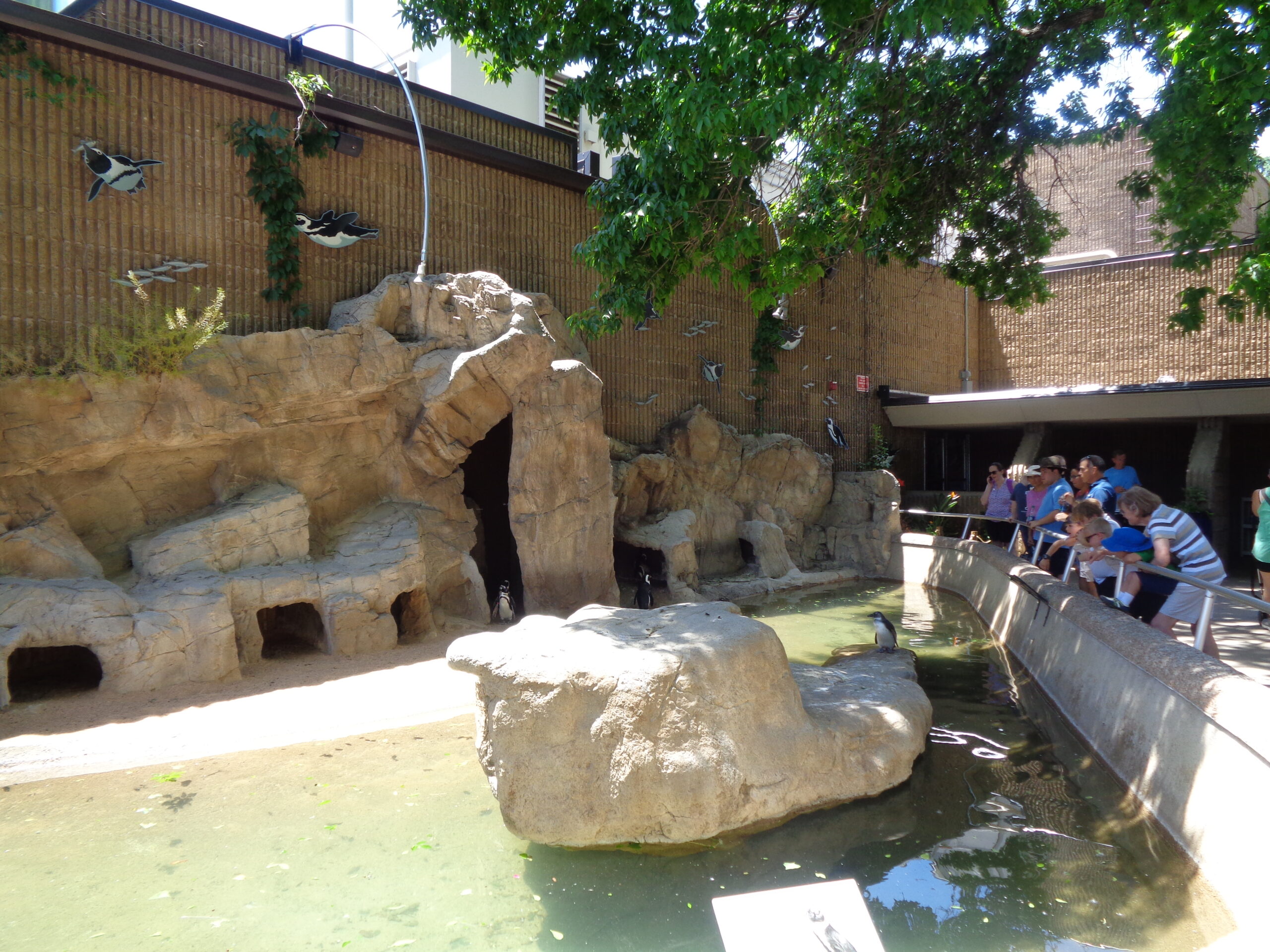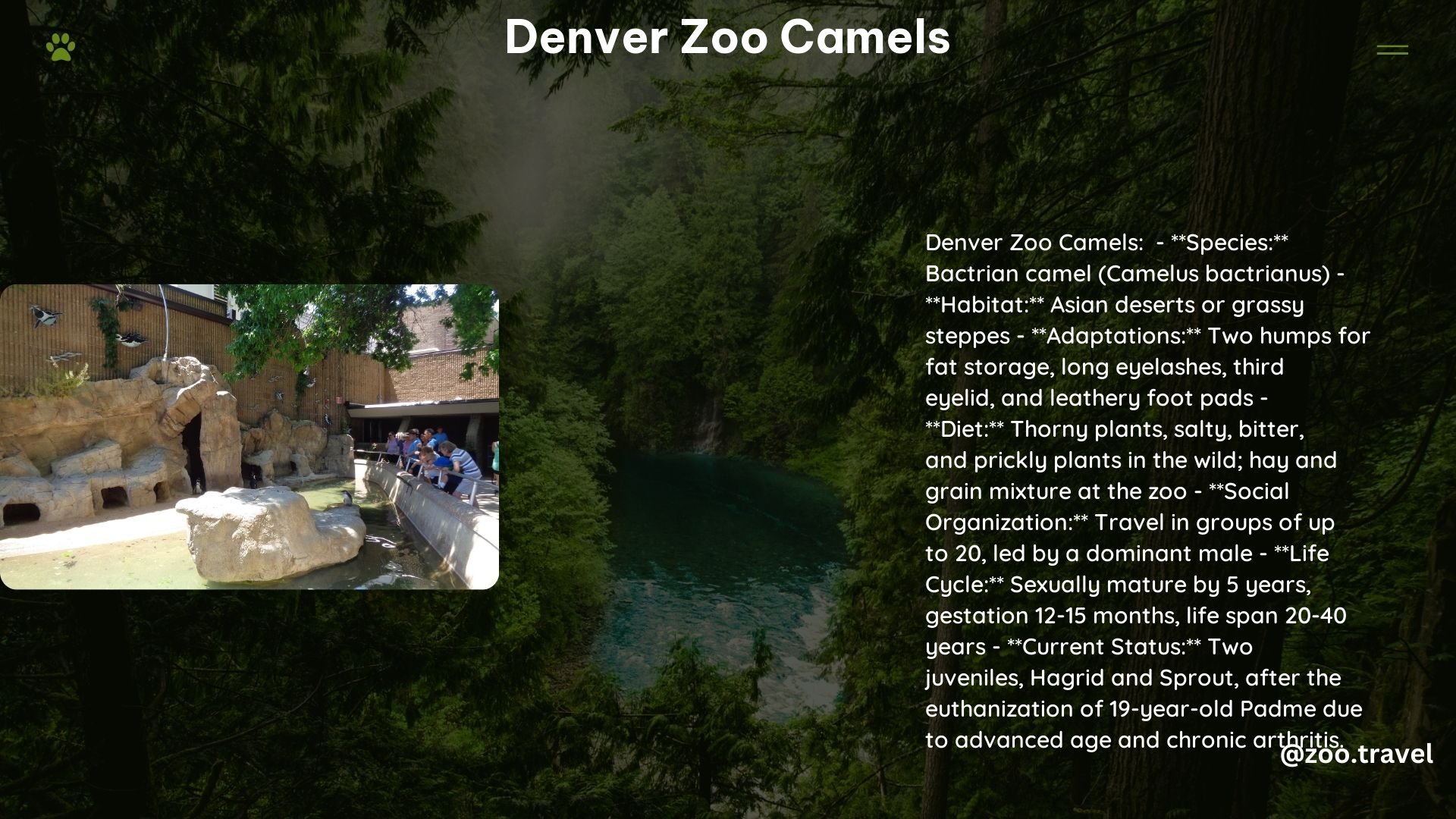Overview of Denver Zoo Camels

The Denver Zoo is home to a captivating collection of Bactrian camels, a species known for their unique adaptations to thrive in harsh desert environments. These remarkable creatures, with their distinctive two-humped silhouettes, have captured the hearts and imaginations of visitors from around the world.
Lifespan and Longevity

Bactrian camels at the Denver Zoo can live an impressive 20 to 40 years, showcasing their remarkable resilience and longevity. This extended lifespan is a testament to the exceptional care and attention provided by the zoo’s dedicated team of caretakers.
Unique Hump Anatomy
One of the most striking features of the Denver Zoo’s Bactrian camels is their distinctive double-humped appearance. These humps, which store fat that can be converted into energy when needed, are a remarkable adaptation that allows these animals to survive in the arid and unpredictable desert landscapes.
Up-Close Look Encounter
For those eager to get an up-close and personal experience with the Denver Zoo’s Bactrian camels, the zoo offers a special “Up-Close Look” encounter. This 30-minute meet-and-greet with the camels and their zookeepers is available on Sundays and Tuesdays at 2:00 pm. The minimum age requirement for this encounter is 12 years old, and participants must wear masks, close-toed shoes, and use provided hand sanitizer.
Adaptations to the Desert Environment
Bactrian camels at the Denver Zoo have evolved a range of remarkable adaptations to thrive in their desert habitat. These include long eyelashes, a third eyelid, and specialized nostrils that protect them from sand and dust. They also have broad, flat feet with leathery pads and two toes, which prevent them from sinking into the sand or snow.
Dietary Preferences
As herbivores, the Bactrian camels at the Denver Zoo primarily feed on thorny plants and vegetation with salty, bitter, and prickly flavors. This unique dietary preference is another adaptation that allows them to survive in the harsh desert conditions.
Recent Loss and Current Herd
In June 2022, the Denver Zoo sadly euthanized a 19-year-old Bactrian camel named Padme due to her declining quality of life caused by advanced age and chronic arthritis. Currently, the zoo’s Bactrian camel herd consists of two juvenile camels, Hagrid and Sprout.
Educational Resources and Encounters
The Denver Zoo is committed to promoting the understanding and appreciation of Bactrian camels through a variety of educational resources and encounters. Visitors can learn about these remarkable animals and their adaptations, as well as the conservation efforts to protect them in the wild.
Conclusion
The Denver Zoo’s Bactrian camels are a true marvel of nature, showcasing the incredible adaptations that allow these animals to thrive in the harshest of environments. Whether you’re a seasoned zoo enthusiast or a first-time visitor, a visit to the Denver Zoo’s camel exhibit is sure to leave a lasting impression and deepen your appreciation for these unique and captivating creatures.
